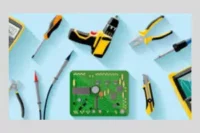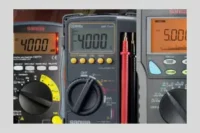Choosing the Best Oscilloscope: A Comprehensive Guide
Published: 29 Dec 2024
An oscilloscope is a vital tool for anyone working with electronic circuits, allowing you to visualize and analyze electrical signals in real time. Whether you’re a hobbyist, engineer, or technician, selecting the right oscilloscope can significantly impact your efficiency and accuracy. With various models and features available, it can be overwhelming to decide which oscilloscope is best for your needs.
This guide will help you navigate through the essential factors to consider when making your choice.
1. Understand Your Application
Before diving into technical specifications, consider the primary purpose of the oscilloscope. Are you troubleshooting basic circuits, designing complex systems, or working in a specialized field like automotive or telecommunications? Different applications demand different performance levels, so knowing your requirements is crucial.
2. Bandwidth

The bandwidth of an oscilloscope determines the range of frequencies it can accurately measure. A general rule of thumb is to choose an oscilloscope with a bandwidth at least 5 times higher than the maximum frequency of the signals you plan to measure. For instance, if your highest signal frequency is 20 MHz, opt for an oscilloscope with at least 100 MHz bandwidth.
3. Sampling Rate
The sampling rate is another critical specification, representing how many samples per second the oscilloscope can capture. A higher sampling rate provides more accurate signal representation. Aim for a sampling rate at least 10 times the signal frequency to ensure precise measurements.
4. Number of Channels
Oscilloscopes typically come with 2, 4, or more channels. If you need to analyze multiple signals simultaneously, a 4-channel oscilloscope offers greater flexibility. Consider the complexity of your circuits when deciding on the number of channels.
5. Storage and Display
Modern digital oscilloscopes come with varying memory depths and display options. A deeper memory allows the oscilloscope to capture longer signal durations without sacrificing resolution. Additionally, a high-resolution display ensures clear and detailed signal visualization, which is especially important for complex waveforms.
6. Portability vs. Performance

If you’re frequently on the move, a portable oscilloscope may be a better option. However, portable models often have limited features compared to benchtop oscilloscopes. Balance portability and performance based on your work environment.
7. Advanced Features
Consider additional features that can enhance your workflow, such as:
- Automated measurements: For faster analysis of key parameters.
- Connectivity: USB, Ethernet, or Wi-Fi options for data transfer and remote operation.
- Triggering options: Advanced triggering capabilities to isolate specific signals.
8. Budget
Oscilloscopes range from budget-friendly options for beginners to high-end models for professional use. While it may be tempting to choose the cheapest option, investing in a reliable brand and model can save you from headaches later. Set a budget based on your current and future needs.
9. Brand and Support
Reputable brands like Tektronix, Keysight, Rigol, and Siglent offer excellent reliability and support. Check for warranties, software updates, and customer service reviews before making your decision.
Conclusion
Choosing the best oscilloscope depends on your specific requirements, from bandwidth and sampling rate to portability and budget. Carefully evaluate your needs and compare models to ensure you invest in a tool that will serve you well for years. Whether you’re a beginner exploring electronics or a seasoned engineer working on advanced systems, the right oscilloscope can make all the difference.





